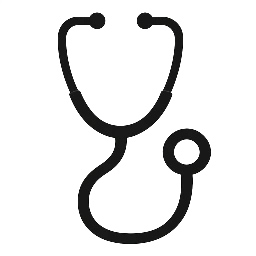DNP 801 Topic 2 Doctoral Learning Strategies Assignment
ORDER NOW FOR CUSTOMIZED, INSTRUCTION-COMPLIANT PAPER – Doctoral Learning Strategies Assignment
Details:
The purpose of the assignment is to demonstrate your working knowledge of APA format by writing a paper.
The doctoral Learning process is uniquely autonomous. It is important to develop individual plans for success and use personal strategies to reach your goals.
General Requirements:
- Review the APA Quiz questions prior to beginning work on your paper.
- When writing this paper ensure you are speaking from a formal standpoint and are not using I-statements.
- Doctoral learners are required to use APA style for their writing assignments. The APA Style Guide is located in the Student Success Center.
- This assignment uses a rubric. Please review the rubric prior to beginning the assignment to become familiar with the expectations for successful completion.
- You are required to submit this assignment to Turnitin. Please refer to the directions in the Student Success Center.
Directions:
In 750-1,000 words, construct a paper that addresses the following.
- Discuss learning experiences one may face prior to the doctoral learning experience. Support your discussion with scholarly evidence.
- Research the autonomous nature of doctoral learning. Discuss how doctoral programs and learning skills and strategies employed when completing them is different than other learning experience.
- Conduct a literature review of five scholarly articles related to strategies for success in doctoral programs.
- Based upon your research discuss specific strategies you recommend when developing a plan for successful completion of a doctoral program.
DNP801.v10R.APASelf-Assessment.docx
Evaluation of Research for PICOT Question Example Approach
The formulation and development of a thoughtful and integrative PICOT question has been insightful on current practice and future recommendations. The literature review gathers necessary information regarding current and future implications for this PICOT question. Literature review is necessary to gather pertinent evidence to support the project and refine the PICOT question. The following PICOT question advises thoughtful consideration through a doctoral project as it is reinforced with considerable research as apparent in the following paper. The chosen PICOT question is: Do oncology patients, who receive massage as an adjunct to pain medications, compared to the standard pain medication therapy, report decreased pain scores, within 4 weeks’ time? This paper will explore evaluating the literature including common and different themes, common works of the authors, data supporting conclusions, and the literary evidence of practical implications to enhance and validate the final PICOT question for the doctoral project.
Evaluation of Literature
Evaluation of the literature for validity and reliability is an important aspect when selecting studies for the doctoral project. Six empirical studies were evaluated and determined reliable that support the PICOT question. The following common and different themes of the literature will be discussed.
Similar Themes
Among the literature review, there were several reoccurring themes. These themes included that massage is a safe adjunct therapy that has no adverse effects, massage is beneficial to immediately reducing pain among oncology patients, massage increases patient satisfaction, and the utilization of light massage is the commonly accepted massage intervention.
The following studies all researched and supported massage among the integrative care for oncology patients and reinforced the support of the PICOT question. Gentile et al. (2018) found that 69% of patients reported a two or more-point decrease in pain level on a pain scale immediately following the massage intervention. The massage intervention utilized gentle Swedish massage that included gliding, light pressure and gentle holds on the patient. The study demonstrated improved quality of life and reduced psychological reactions among the patients. Lopez et al. (2017) showed a significant improvement in pain scores immediately following a light Swedish-style massage. The study revealed improved well-being following the massage. Lee, Kim, Yeo, Kim and Lim (2015) displayed a large reduction in oncology pain among 12 studies in a meta-analysis. Mao et al. (2017) revealed a significant pain level reduction by an average of 1.4 on the pain scale immediately following light or ultra-light massage intervention without any adverse effects. 93% of the participants reported satisfaction …
Cont. …

Leave a Reply